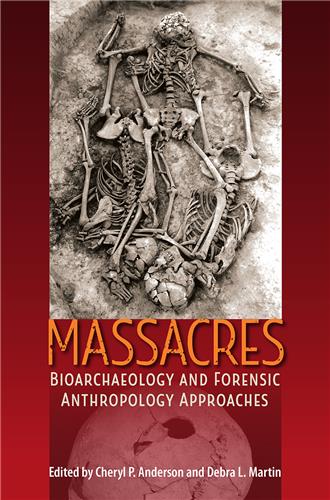Essays in this volume examine borderland settings in cultural contexts that include Roman Egypt, Iron Age Italy, eleventh-century Iceland, and the precontact American Great Basin and Southwest. Contributors look at isotope data, skeletal stress markers, craniometric and dental metric information, mortuary arrangements, and other evidence to examine how frontier life can affect health and socioeconomic status. Illustrating the many meanings and definitions of frontiers and borderlands, they question assumptions about the relationships between people, place, and identity.
Bioarchaeological Interpretations of the Human Past: Local, Regional, and Global Perspectives
Edited by Clark Spencer Larsen and Marin A. PilloudClark Spencer Larsen
The Ohio State University
larsen.53@osu.edu
Marin A. Pilloud
University of Nevada, Reno
mpilloud@unr.edu
There are 34 books in this series.
Please note that while you may order forthcoming books at any time, they will not be available for shipment until shortly before publication date
This volume brings together experts in archaeology and bioarchaeology to examine continuity and change in ancient Arabian mortuary practices. While most previous investigations have been limited geographically to Egypt and the Levant, this volume focuses on the lesser-studied southeastern Arabian Peninsula, showing what death and burial can reveal about the lifestyles of the region’s prehistoric communities.
This volume integrates data from researchers in bioarchaeology and forensic anthropology to explain when and why group-targeted violence occurs. Massacres have plagued both ancient and modern societies, and by analyzing skeletal remains from these events within their broader cultural and historical contexts this volume opens up important new understandings of the underlying social processes that continue to lead to these tragedies.
This volume offers a novel interdisciplinary view of the migration, mobility, ethnicity, and social identities of pre-Columbian Mesoamerican peoples. In studies that combine bioarchaeology, ethnohistory, isotope data, and dental morphology, contributors demonstrate the challenges and rewards of such integrative work when applied to large regional questions of population history.
Emphasizing a life course approach and developmental perspective, this volume’s interdisciplinary nature marks a paradigm shift in the way children of the past are studied. It points the way forward to a better understanding of childhood as a dynamic lived experience both physically and socially.
Tooth modification has been practiced throughout many time periods and places to convey information about individual people, their societies, and their relationships to others. This volume represents the wide spectrum of intentional dental modification in humans across the globe over the past 16,000 years.
A monumental synthesis of a half century of research, this book investigates three communities from the ancient Nubian civilization of the Nile River Valley. Excavations in this region first inspired the “biocultural approach” to human biology now used by anthropologists worldwide, and Life and Death on the Nile exemplifies the very best of this perspective. It is the life’s work of two highly accomplished anthropologists.
This unique collection synthesizes our archaeological and biological knowledge about the pre-Columbian settlement of the Caribbean and highlights the various techniques we can use to analyze human migration and settlement patterns throughout history.
Drawing upon wide-ranging studies of prehistoric human remains from Europe, northern Africa, Asia, and the Americas, this groundbreaking volume unites physical anthropologists, archaeologists, and economists to explore how social structure can be reflected in the human skeleton.
Colonized Bodies, Worlds Transformed represents a new generation of contact and colonialism studies, expanding upon a traditional focus on the health of conquered peoples toward how extraordinary biological and political transformations are incorporated into the human body, reflecting behavior, identity, and adaptation. These globally diverse case studies demonstrate that the effects of conquest reach farther than was ever thought before--to both the colonized and the colonizers.











